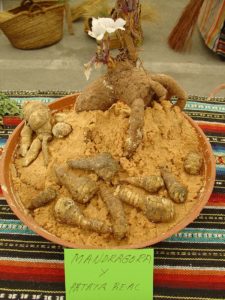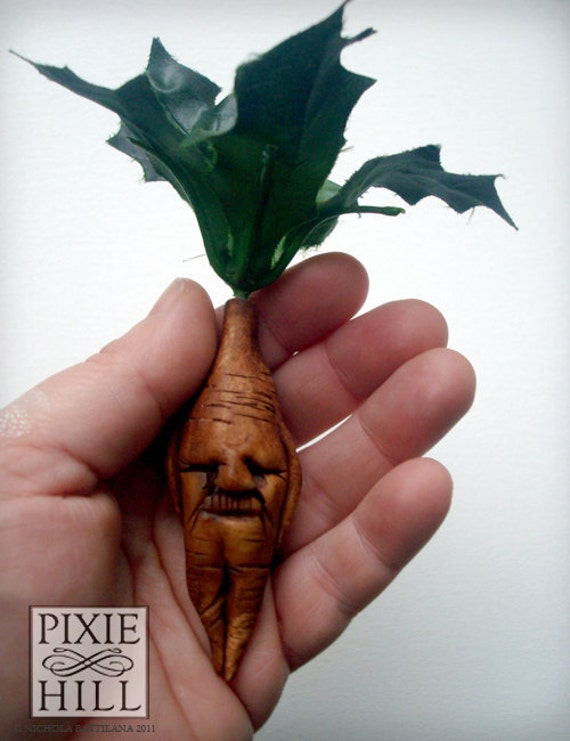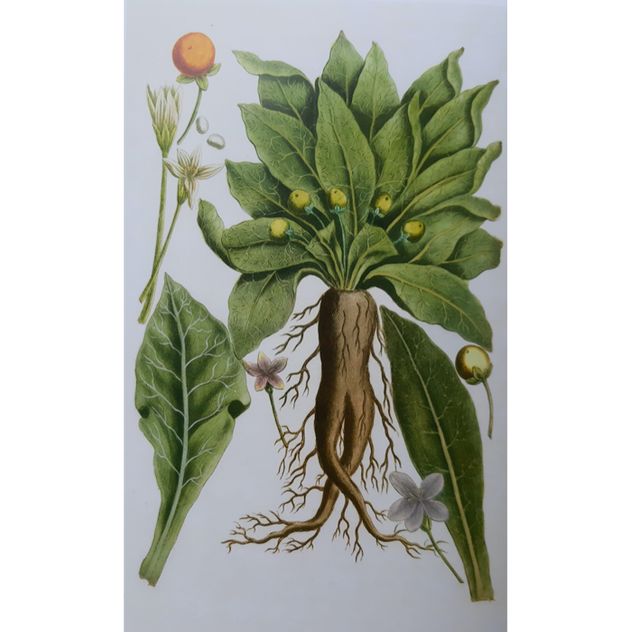

Genesis 30:14, “During wheat harvest, Reuben went out into the fields and found some mandrake plants, which he brought to his mother Leah. Song of Solomon 7:13, “The mandrakes send out their fragrance, and at our door is every delicacy, both new and old, that I have stored up for you, my lover.” Passages that mention the mandrake include: Often associated with superstitions, it is the strange human-like shapes that the root takes on that make it a truly intriguing plant. The root of the mandrake can reach feet in length and weigh several pounds. The leaves form a rosette with a center that is filled with pretty purple flowers that emerge during the wintertime. The plant is made up of several large, wrinkled, dark green leaves that lie flat on the ground. In the Bible, it is mentioned that the mandrake grows as a weed in fields of wheat. Interestingly, for being a common plant during Biblical times, it only appears in religious text twice, in Genesis and Song of Solomon. Known for its strange and mysterious history, the mandrake (also known as Mandragora officinalis) belongs to the nightshade family, which includes a variety of poisonous plants. They possess a rather distinct taste that is used as a flavoring for bread and other baked goods. The plant produces jet black seeds that are harvested in the early part of the summer. Pretty flowers start to emerge in the spring season. The fruit had a pleasant taste and odor and was supposed to ensure conception (Gen.

Despite what it is called, black cummin is not related to the herb cummin.īlack cummin is planted during the wintertime. For example, when the New International Version mentions “caraway”, the King James Version mentions “fitches”, and other texts that reference ‘dill’, they are actually referred to a plant called black cummin (also known as Nigella sativa). Sometimes, references to plants in the Bible are mistaken for other species. You should have practiced the latter, without neglecting the former.”

But you have neglected the more important matters of the law–justice, mercy and faithfulness. However, one of the most well known of references to cummin is found in Matthew 23:23: “Woe to you, teachers of the law and Pharisees, you hypocrites! You give a tenth of your spices–mint, dill and cummin. His God instructs him and teaches him the right way. “When he has leveled the surface, does he not sow caraway and scatter cummin?ĭoes he not plant wheat in its place, barley in its plot, and spelt in its field? The seeds of cumin (an annual plant related to dill) are grown as a flavoring for bread and pastries and references to the plant appear a couple of times in Isaiah 28 (in verses 25, 27, and 28): Then Rachel said to Leah, Give me, I pray thee, of thy son's mandrakes. While you’ve probably heard of the plant associated with witchcraft and magic, it is also mentioned in the Bible, along with cummin and black cummin, which is also discussed in this article. Genesis 30:14 - And Reuben went in the days of wheat harvest, and found mandrakes in the field, and brought them unto his mother Leah. The mandrake belongs to the nightshade family, where you will find a handful of poisonous plants.


 0 kommentar(er)
0 kommentar(er)
